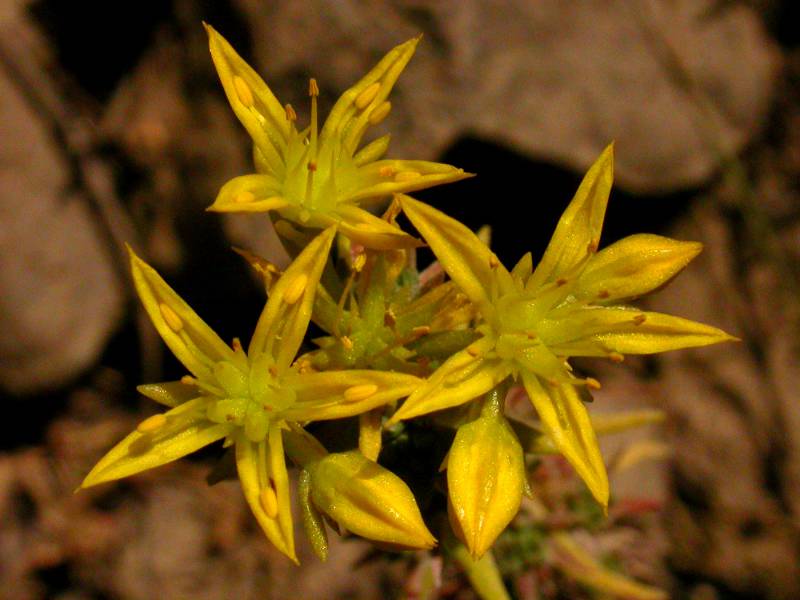Sedum laxum
Sedum stenopetalum
wormleaf stonecrop
Leaves alternate, linear or narrowly linear-lanceolate, keeled or nerved, narrowly tapered to a sharp tip, 5-15 mm. long, deciduous by flowering, except the decumbent branches have many leaves persistent, sometimes only the mid-ribs remaining; upper cauline leaves sometimes persistent and bearing bulblet-like structures.
Flowers in compact cymes;
sepals 5, lanceolate, 2 mm. long;
petals 5, yellow, 6-8 mm. long, spreading, lanceolate, acuminate and ending in a sharp point;
stamens 10, 1.5-2.5 mm. shorter than the petals, 5 attached to the base of the petals. Occasionally some or all of the flowers are reduced to bulblets.
Follicles 5, widely divergent.
Sedum laxum
Sedum stenopetalum
Occurring chiefly east of the Cascade crest in Washington; British Columbia to California, east to the northern Rocky Mountains.
- Local floras:
BC,
CA,
OR,
WA
- Local Web sites:
CalFlora,
CalPhotos,
Flora NW,
PNW Herbaria,
Turner Photog.
WildflowerSearch
iNaturalist (observations)
USDA Plants Database
- LBJ Wildflower Center
- SEINet
- Plants of the World Online
- Encyclopedia of Life
- Wikipedia
- Google Image Search


